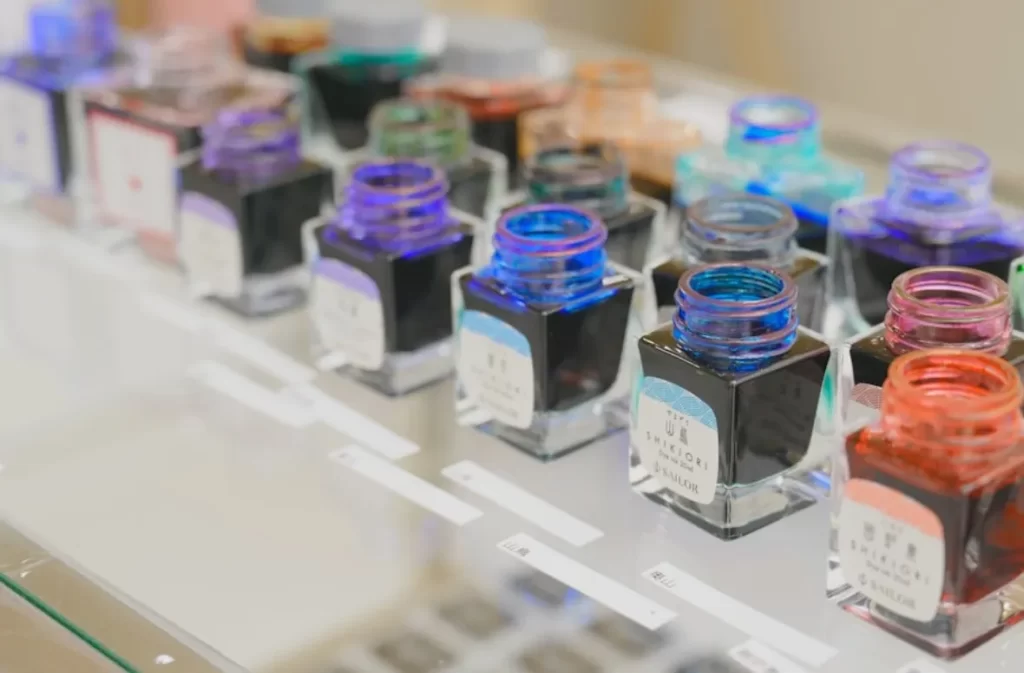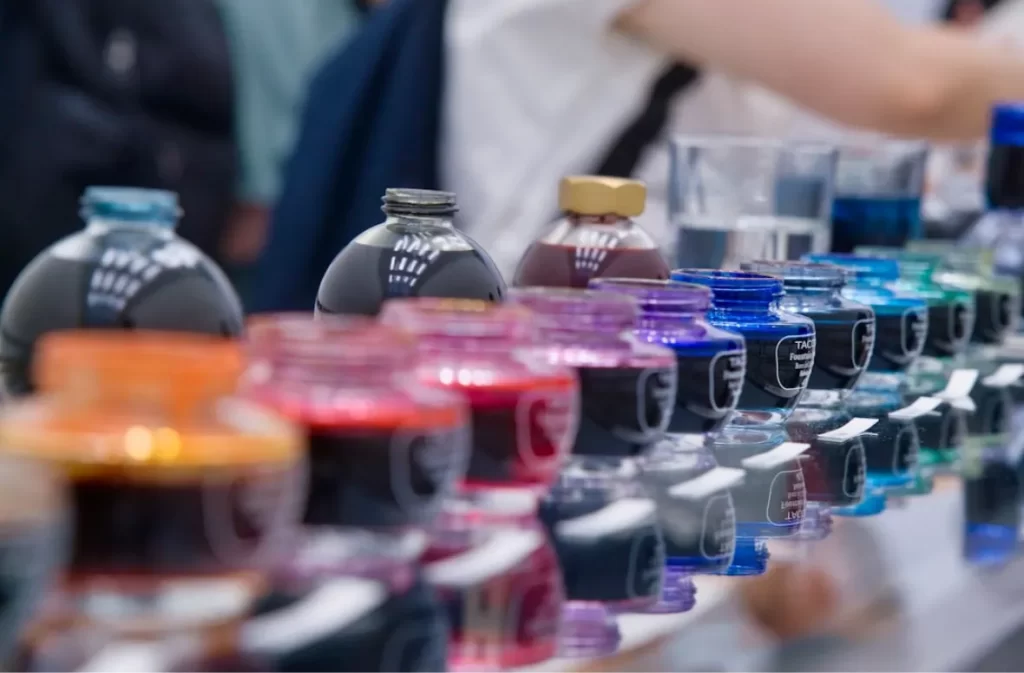Table of Contents
Sublimation printing has gained massive popularity in recent years, especially for creating vibrant, long-lasting designs on a wide range of materials. The secret behind this robust printing process lies in sublimation ink. If you’re wondering what sublimation ink is and how it works, this article will give you a thorough understanding of the science, the advantages, and the best practices for using this technique to create stunning prints. Let’s dive in and explore everything you need to know about sublimation ink!
The Functions of Sublimation Ink and What Is It?
At the core of sublimation printing is sublimation ink, a special type of dye that is used in conjunction with a heat press. This ink is different from traditional printing inks in that it changes directly from a solid to a gas when heated, bypassing the liquid phase. This process, known as sublimation, allows the ink to bond with the fibres of the material, resulting in vibrant, long-lasting prints.
In sublimation printing, the ink is transferred onto a special paper, such as sublimation paper, which is then placed onto the item you want to print, often a polyester fabric or a product treated with polyester. Using heat and pressure, the ink transforms into a gas and permeates the fibres of the material, permanently bonding with it. This results in prints that are not only vivid but also resistant to fading, even after washing.
The Sublimation Print Process Explained

The process of sublimation printing begins with preparing your design on your computer, just like you would with any digital print job. The key difference is the sublimation ink used in the printer. Once your design is ready, it’s printed onto sublimation paper using a sublimation printer. Ink cartridges that contain sublimation inks are used in these printers.
Following printing, the paper is applied to the object, which is usually a polyester fabric or a product with a specific coating. After that, pressure and heat are applied using a heat press. During this process, the sublimation ink changes into a gas and bonds directly with the fibres of the fabric or coating. Unlike other printing methods, this results in prints that become an integral part of the material, making them resistant to fading or washing off over time.
Pros of Sublimation Printing
There are several key benefits to using sublimation ink in printing, especially when compared to traditional printing methods or inkjet printing.
- Vivid Colors: Sublimation inks produce vibrant colours that look great on a variety of materials.
- Durability: The prints are permanent because the ink bonds with the fabric or material, making it resistant to fading, peeling, or cracking over time.
- Soft to the Touch: Unlike other printing techniques that add a layer of ink on top of the material, sublimation printing allows the ink to become part of the material, leaving the surface feeling soft and smooth.
- No Need for White Ink: Since sublimation inks are transparent, there’s no need for white ink in the process. This makes it perfect for polyester fabrics, which are typically used for sublimation printing.
How to Use Sublimation Ink Effectively
To achieve the best results with sublimation ink, it’s essential to follow the proper steps:
- Choose the Right Materials: Sublimation ink works best with polyester fabrics or items that are coated with polyester. Using the wrong material, such as cotton, can lead to poor results because the ink won’t bond properly.
- Use the Correct Printer: Make sure you are using a sublimation printer or an inkjet printer that is specifically designed for sublimation inks. Sublimation ink is not compatible with every printer.
- Ensure Proper Printer Settings: Before you start printing, ensure your printer is set to the correct colour profile and settings. This helps ensure that your colours are as vibrant as possible.
- Choose the Right Paper: Use high-quality sublimation paper that is designed to work with sublimation inks. This will help ensure the ink is transferred effectively and results in sharp, crisp prints.
Why You Should Invest in a Sublimation Printer

If you’re looking to create custom prints on a range of materials, investing in a sublimation printer is a great choice. These printers are specifically designed to work with sublimation inks and can produce stunning, long-lasting designs.
A sublimation printer can be used for a wide range of applications, from textile printing on polyester fabrics to printing on mugs, phone cases, and other coated products. Whether you’re looking to start a small business or simply create custom gifts for friends and family, sublimation printing offers a versatile, high-quality solution.
Common Disadvantages of Sublimation Printing
While sublimation printing has many advantages, it’s not without its challenges. Some of the disadvantages of sublimation include:
- Limited Material Compatibility: Sublimation ink works best with polyester fabrics or specially coated materials. It’s not ideal for natural fabrics like cotton, which limits the types of products you can print on.
- Requires Special Equipment: To get the best results, you’ll need a sublimation printer, sublimation paper, and a heat press. These specialized tools can be expensive, which may be a barrier for those just starting.
- Ink Costs: While sublimation inks are high-quality, they can be more costly than traditional inks used in inkjet printing.
Can You Use Regular Paper for Sublimation Printing?
It is not possible to sublimate print on ordinary paper. Sublimation ink requires special sublimation paper that is designed to hold the ink properly and release it under heat and pressure. Using regular paper will result in poor prints, as the ink will not transfer effectively.
Read Also: How Pests and Animals Damage Your Trees: What to Watch For
Sublimation Inks Are Transparent
A unique feature of sublimation inks is that they are transparent. This is especially important because it allows the ink to bond with the material rather than sit on top of it. This results in prints that are not only vibrant but also durable, making it perfect for creating custom apparel or other items that will be washed or worn frequently.
Printing Techniques and Transfer Methods
The key to successful sublimation printing is understanding the printing technique and transfer methods. Sublimation ink needs to be applied under the right conditions of heat and pressure. This ensures that the ink transforms into a gas and properly bonds with the polyester fabric or coated material.
Whether you’re printing vivid and durable results on polyester fabrics or special transfer paper, it’s essential to follow the correct steps and use the proper equipment. The results will be stunning, long-lasting, and fade-resistant.
Common Questions About Sublimation Printing

- Can I use sublimation ink on cotton fabric?
- No, sublimation ink is designed to work best with polyester fabrics or items coated with polyester.
- Do I need to use a special printer for sublimation printing?
- Yes, you’ll need a sublimation printer that is specifically designed to work with sublimation inks.
- What is the difference between sublimation printing and other printing methods?
- Unlike traditional inkjet printing, sublimation printing uses heat to transfer ink directly onto the material, resulting in a more durable and vibrant print.
What is Sublimation Ink and How Does It Work?
Now that you know what sublimation ink is and how it works, it’s clear that this printing method offers incredible potential for creating custom, long-lasting prints. Whether you’re using it for textile printing, custom gifts, or promotional items, sublimation printing is an excellent choice for anyone looking to achieve vibrant and durable results. Just remember to choose the right materials, use the proper equipment, and follow the necessary steps to get the best results. Happy printing!




